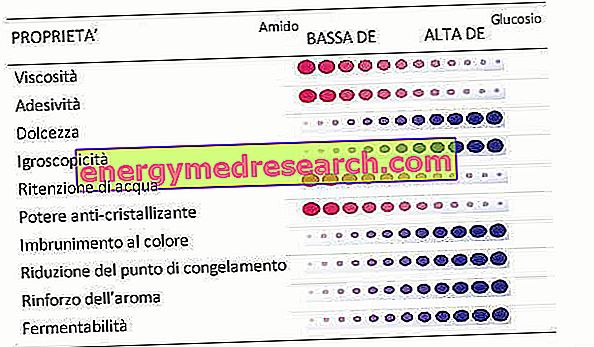Generality
Trochanteritis is the inflammation of the characteristic synovial bursae located superiorly to the great trochanter of the femur, to protect the tendons which are inserted at the level of the latter.

Acute traumas and chronic repetitive-type hip traumas can cause trochanteritis.
The presence of trochanteritis produces, at the hip, symptoms and signs, such as: pain, swelling, a sense of stiffness, redness, heat and soreness.
In the absence of adequate treatments, trochanteritis can seriously compromise simple and daily activities such as walking, sitting and driving etc.
The tests for a correct diagnosis of trochanteritis are: the analysis of symptoms (physical examination and anamnesis), an ultrasound at the level of the great trochanter and magnetic resonance related to the hip.
The treatment of trochanteritis is generally conservative and is based on: resting, applying ice several times a day and taking NSAIDs.
Brief anatomical review of the great trochanter
The large trochanter is the characteristic lateral bony prominence of the proximal end of the femur ; the femur is the bone of the thigh, which is the anatomical region of the human body interposed between the pelvis and the leg.
Located on a region of the proximal end of the femur called the neck, the large trochanter has the important task of inserting the initial or terminal tendons of some muscles fundamental to hip and thigh movements. At the level of the great trochanter, in fact, the external obturator, small gluteus, middle gluteus, internal obturator, upper twin, inferior twin, piriform and vast medial muscles interact.
The large trochanter should not be confused with the small trochanter of the femur; the latter is always a bony prominence of the neck of the femur (therefore always on the proximal end), but, compared to the large trochanter, it is smaller and resides in a more internal and lower position.
To understand…
- The proximal end of the femur is the portion of the femur closest to the center of the body.
- The term "lateral", referring to the large trochanter, indicates that the latter is located on the outer side of the femur.
What is trochanteritis?
Trochanteritis, or trochanteric bursitis, is the inflammation of the synovial bursa located above the large trochanter of the femur, to protect the tendons of the muscles that have insertion on the surface of the bony prominence just mentioned (ie on the large trochanter).
Although the synovial bursa of the great trochanter does not properly belong to the hip joint, trochanteritis is considered, in the medical field, as one of the two bursitis that can affect the aforementioned joint; the other hip bursitis is the inflammation of the iliopsoas synovial bursa, located between the hip joint capsule and the ileopsoas muscle.
Curiosity: what is a synovial bag?
The synovial bags are pockets covered by a membrane (synovial membrane) and containing a viscous liquid (synovial fluid). Acting as anti-friction and anti-rubbing pads, they have the task of preserving the ligaments, tendons, cartilaginous tissues and other anatomical structures of the synovial joints (eg, hip, knee, etc.).
Other synonyms of trocanterite
In addition to the name trochanteric bursitis, trochanteritis is also known as the painful syndrome of the great trochanter, bursitis of the great trochanter and trochanteric enthesitis .
Causes
The inflammatory state that characterizes the trochanteritis can arise as a result of:
- An abnormal friction between the tendon insertions present on the large trochanter and the overlying synovial bag;
The typical causes of this anomalous friction include:
- Accidental falls on one side, particularly on the hip;
- Accidental bumps between the hip and objects such as doors, furniture, etc .;
- Hip bruises in sports (the sports most at risk are those of contact, such as rugby or American football);
- You lie on your side on a hard surface for a long period of time.
- A mild but repetitive trauma (overload injuries) against the synovial bursa that protects the great trochanter.
Among the typical factors triggering this mild but repetitive trauma are sports activities, such as running, mountain walking or cycling, practiced in an inappropriate way. For example, running can represent a possible cause of trochanteritis, when it is performed with a bad technique or without treating muscle stretching and toning from time to time; cycling, on the other hand, can be responsible for trochanteritis, when it is practiced with a saddle-adjusted bike.
Therefore, trochanteritis can be the result of an acute phenomenon or a gradual phenomenon.
Other causes of trochanteritis
More rarely than in previous cases, trochanteritis can also be a condition secondary to certain diseases or anatomical anomalies, such as:
- Scoliosis . It consists in the permanent lateral deviation of the vertebral column, associated with the rotation of the vertebral bodies;
- Dysmetria of the lower limbs . It is essentially the anatomical anomaly for which a lower limb is longer than the other;
- Osteoarthritis (or arthrosis ). It is the most common form of arthritis (inflammation of the joints) in humans.
- Rheumatoid arthritis . It is the second most common form of arthritis in humans; it is an autoimmune disease;
- Atrophy of the hip muscles . It means that the hip muscles are weak;
- Calcium deposition at the level of tendon insertions located on the large trochanter of the femur.
Risk factors of trochanteritis
I am at risk of trochanteritis:
- Victims of accidental falls, bruises or bumps, affecting the hip;
- Practitioners of sports such as running, cycling or mountain walking;
- Carriers of a scoliosis;
- Patients with osteoarthritis or rheumatoid arthritis;
- Who has a dismetria in the lower limbs;
- Who has an atrophy of the hip muscles;
- Who has the habit of taking bad postures.
Epidemiology
Trochanteritis is a fairly common condition, which, according to statistics, would affect 5 adult individuals per 1, 000.
Most sufferers are trochanteric bursitis: middle-aged people and the elderly (middle-advanced age is a risk factor for osteoarthritis); those who practice walking activities in an exaggerated manner; those who practice medium-long distance running; finally, those who practice road cycling.
Of the two bursitis that can affect the hip, the most common is trochanteritis, numbers in hand.
Symptoms and Complications
Trochanteritis causes quite characteristic symptoms and signs; these symptoms and signs consist of:
- Hip pain . Sometimes, this pain can affect the buttocks, the outer thigh and even the knee.
Furthermore, it happens quite normally that it gets worse when the patient:
- Climbs the stairs;
- He sleeps on the side where the affected hip resides;
- Cross your legs in a sitting position;
- He stands up after some time in a sitting position;
- He walks a long time;
- He stood several consecutive hours.
- Hip swelling . The synovial bags subject to inflammation fill with liquid, thus increasing in volume; the swelling that characterizes the trochanteritis is the result of the increased volume of the synovial bursa present on the large trochanter of the femur.
- Redness and heat at the hip . They are two typical consequences of inflammatory phenomena.
- Sense of joint stiffness in the hip .
- Sense of soreness in the hip .
Surely, among these symptoms and signs just listed, the most characteristic as well as the first to appear is hip pain .
Complications
In the absence of adequate treatments, the hip pain caused by trochanteritis becomes so intense, that the patient finds it almost impossible to carry out the most normal daily activities, such as walking, climbing stairs, sitting to drive, sleeping on the side of the hip interested etc.
When should I go to the doctor?
An individual with pain, swelling, soreness and a sense of stiffness in the hip should contact their doctor and request a follow-up visit when the above symptoms have been underway for at least a couple of weeks.
Diagnosis
For the diagnosis of trochanteritis, a thorough physical examination and an in-depth medical history are fundamental, and secondly, some diagnostic imaging tests, such as ultrasound and MRI .
In some circumstances, doctors may also prescribe an X-ray examination, for the purpose of so-called differential diagnosis and to make sure that the femur is healthy.
Physical examination and medical history
The physical examination and the medical history are two investigations aimed at clarifying the precise connotations and the reason for the present symptomatology. In other words, they are two studies related to the symptoms and causes of the latter.
For an individual who complains of the classic symptoms of trochanteritis, the physical examination and the medical history consist not only of a thorough medical examination, but also of a questionnaire, whose typical questions are:
- Where does pain localize?
- What movements worsen hip pain?
- How long has the hip pain been going on?
- Did the hip pain appear after a particular episode, such as a fall, a bruise or a bump?
- Does the patient practice risky activities, such as mountain walking, medium-long distance running or road cycling?
Although diagnostic confirmation tests are others, physical examination and medical history can provide information sometimes sufficient to establish the presence of trochanteritis.
Ultrasound and MRI
The ultrasound referred to the latero-superior portion of the thigh and the nuclear magnetic resonance to the hip are, in fact, the only two diagnostic tests that allow to establish with absolute certainty the presence of trochanteritis.
Both ultrasound and nuclear magnetic resonance are two completely painless and non-invasive tests; both, in fact, do not include the insertion of instruments inside the body, the use of contrast liquids and exposure to harmful ionizing radiations.
Therapy
With the aim of eliminating inflammation, the canonical treatment of trochanteritis is conservative and is based on:
- Rest ;
- Application of ice on the painful area;
- Administration of non-steroidal anti-inflammatory drugs (NSAIDs).
If this therapeutic approach fails, the treating physician can add the physiotherapy and a pharmacological treatment based on corticosteroids to the above remedies, which are powerful anti-inflammatories; although they are not primary solutions, both physiotherapy and corticosteroids maintain the nature of the starting treatment, which, therefore, remains conservative.
In the unfortunate event that not even the addition of physiotherapy and corticosteroids led to appreciable results, all that remains is to focus on surgical therapy, to be precise on a borsectomy operation .
Conservative therapy: rest
For rest is meant to stimulate the painful lower limb to the minimum, which means avoiding: standing up too long, walking too much, running, sleeping on the side of the aching hip, assuming positions that cause pain, etc.
The time to devote to rest varies from patient to patient, depending on the severity of the inflammation: the more severe the inflammation is, the more rest days are to be observed.
Sometimes, for the first few days of rest, the doctor could prescribe the use of a crutch, in order to make the forced use of the painful lower limb easier.
Conservative therapy: ice
Ice therapy has an excellent anti-inflammatory power, but many underestimate it.
To be effective, the use of ice must take place in specific ways, which are:
- 3-5 applications per day;
- 15-20 minutes per application (shorter or longer applications are, for different reasons, less effective, sometimes counterproductive).
Conservative therapy: NSAIDs
NSAIDs are anti-inflammatory drugs that combine good efficacy with few side effects; this explains why they are among the first-line conservative remedies in the presence of many inflammatory conditions, not just trochanteritis.
Among the most employed NSAIDs, ibuprofen deserves a mention.
Is there an alternative to NSAIDs?
The alternative to NSAIDs, both in terms of therapeutic power and the lack of side effects, is paracetamol .
Conservative therapy: physiotherapy
The physiotherapy adopted in the case of trochanteritis consists of stretching and strengthening exercises of the hip muscles; these exercises are beneficial, because they reduce the stresses on the synovial bursa of the great trochanter, during the practice of activities such as walking, running, cycling, etc.
Physiotherapy is a particularly useful remedy when the trochanteric bursitis represents an overload injury.
Conservative therapy: corticosteroids
The administration of corticosteroids takes place directly in the painful area, by injection .
Unfortunately, to offset the excellent anti-inflammatory power of corticosteroids are the possible serious side effects of the latter (obesity, hypertension, glaucoma, etc.), linked to their improper use.
Surgical therapy: borsectomy
Borsectomy is the name of a synovial bursa removal surgery.
The current technique of performing borsectomy is arthroscopy, a minimally invasive surgical approach that does not require general anesthesia, but only the local one, and does not require hospitalization, but only an observation period of a few hours.
The use of borsectomy in the presence of trochanteritis is indeed very rare and is reserved only for clinical cases that do not benefit from any of the conservative treatments listed above.
Other tips
To heal faster from trochanteritis, experts recommend:
- Follow the instructions of the attending physician to the letter regarding the prescribed therapy;
- Patient complete pain relief before resuming any activity considered to be at risk. The attenuation of pain does not mean healing, but only that the inflammatory state has been reduced; resuming motor activities in this critical phase of healing causes the symptoms present previously to resurface and lengthen recovery times;
- Lose weight if necessary. Medical studies have noted that obesity and overweight slow down the healing process from trochanteritis;
- Repeat the physiotherapy exercises performed with the therapist at home;
- If circumstances exist, use a raised slab to remedy a disparity of the lower limbs.
Prognosis
The prognosis in the case of trochanteritis depends, essentially, on the timeliness with which the patient undergoes all the appropriate treatment. In fact, if the treatments are timely, the chances of a complete recovery are very close to 100%; on the contrary, if the treatments are performed with delay or the patient does not follow them properly, the chances of complete recovery are reduced, leaving room for problems such as:
- Re-emergence of inflammation with the resumption of motor activity;
- Chronic pain in the hip due to an equally chronic inflammatory state;
- Inability to perform certain activities (eg: running, road cycling), when the execution time goes beyond a certain playing time.
Healing times
In most cases, the trochanteritis subjected to the right treatments heals within 6 weeks .
Prevention
The main suggestions for preventing trochanteritis are:
- Maintain trophism of the hip muscles. This is good advice not only for sportsmen, but also for those who, having a mostly sedentary life, manage to devote little time to physical activity;
- For those who practice the medium-long distance run, optimize the running technique and wear appropriate footwear;
- Wear a special insole, if there is a problem like the disparity of the lower limbs;
- Avoid overweight and obesity;
- If you approach sports like running or cycling for the first time, start with a gradual training;
- In sports such as running or cycling, insert toning workouts for the lower limbs every now and then.
This scheme just reported finds application and is equally valid even when the scope of discussion is the best method to prevent relapses of a trochanteritis .



